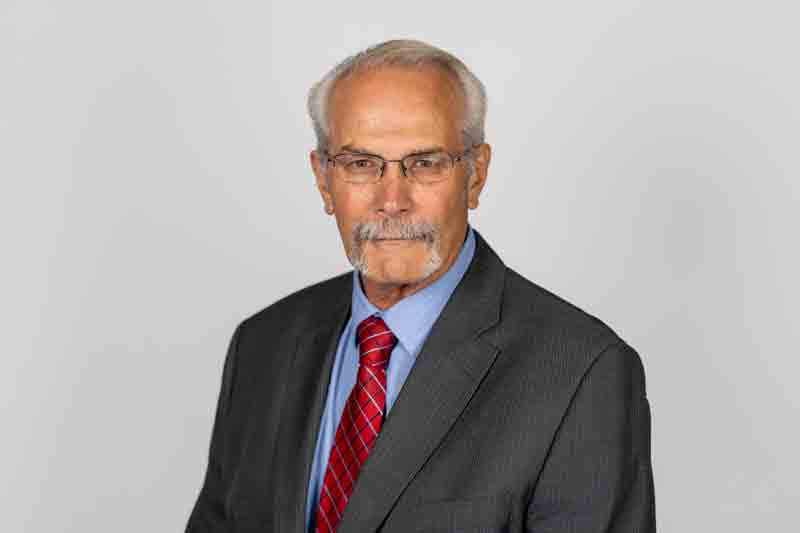Safety Column: Updates to California Government Code 4216 – One Call Law 811
By Peter Kuchinsky II, CSP, Regulations
 Ensuring safety in the wastewater treatment sector requires a comprehensive strategy that includes proper training, personal protective equipment (PPE), adherence to safety protocols, routine inspections, and clear communication to reduce risks associated with hazardous materials and equipment. The aim of this new column is to provide a toolbox for safety topics with relevant and timely content, addressing the hazards and risks within the industry and serving as toolbox training for agencies and their crews.
Ensuring safety in the wastewater treatment sector requires a comprehensive strategy that includes proper training, personal protective equipment (PPE), adherence to safety protocols, routine inspections, and clear communication to reduce risks associated with hazardous materials and equipment. The aim of this new column is to provide a toolbox for safety topics with relevant and timely content, addressing the hazards and risks within the industry and serving as toolbox training for agencies and their crews.
This first column will highlight the changes made at the beginning of this year to the California Government Code 4216. Some may recognize this regulation as 811, One Call, DigAlert (Southern California), or USANorth (Northern California). These changes affect both excavators and facility owners. As we know, water and wastewater agencies often have both responsibilities. If you haven’t reviewed these changes, take the time to look them over and consider organizing a training session or toolbox discussion with your team.
Below are essential considerations for safe excavation practices related to the 4216 changes:
- The Underground Safety Board investigates accidents, develops safety standards, and provides education. They focus on utility strikes that damage “High Priority” lines, such as electrical, gas, and hazardous pipelines. Incidents must be reported promptly to 911, 811, the Underground Safety Board, and the Facility Owner, as outlined in their resource (https://bit.ly/4l4aWdR.) Both excavators and facility owners are required to report damage swiftly. Excavators must notify operators immediately upon discovering any damage to subsurface installations, including breaks, leaks, or dents.
- An excavator may begin excavation before the legal start date and time if all conditions on the ticket have been met. This means that the excavator has received a “positive response” and/or utility lines listed on the 811 Ticket have been located and marked in the field. The excavator is responsible for confirming the “positive response” or field markout.
- An excavator may use a vacuum excavation device to locate subsurface installations in the tolerance zone if they notify the regional notification center when obtaining a ticket, and if the operator consents. If the operator does not agree to use the device, this information must be included in their electronic positive response. Note: If an excavator indicates a desire to use vacuum excavation on their ticket and the facility owner does not object via the 811 Ticket, it will be counted as a “positive response” for using vacuum equipment in the tolerance zone.
- If a ticket obtained by an excavator expires while work is ongoing, the excavator must immediately cease excavation, contact the regional notification center, and obtain a new ticket. Do not let your tickets expire; in most cases, tickets are valid for 28 working days.
- If the exact location of the subsurface installation cannot be determined through hand excavation, the excavator shall request that the operator provide additional information, provided that such information is available to the operator, to assist the excavator in determining the precise location of the installation. The operator shall supply any relevant existing additional information to the excavator within one working day.
- Under Cal/OSHA 1541, only qualified personnel may perform subsurface installation locating activities, and all such activities must be conducted in accordance with Government Code 4216. Employees involved in excavation operations and exposed to excavation hazards must receive training in the excavator notification and excavation practices required by Government Code Sections 4216. As always, this training should be documented and updated.
A brief summary of some of the changes can be found at: https://bit.ly/4hE1lYh. Download an entire copy of CGC 4216.
Additional resources regarding CGC 4216, the 811 ticket process, and safe excavation and locating practices can be found at DigAlert (Southern California) https://www.digalert.org/, USANorth (Northern California) https://www.usanorth811.org/, and the Underground Safety Board https://energysafety.ca.gov/what-we-do/undergroundsafetyboard/.
Mr. Peter Kuchinsky II, CSP offers nearly 40 years of experience working in the water and wastewater safety and construction industries. His career he has held increasing levels of responsibility involving employer safety and public agency risk management. He retired after serving for 19 years as the Lead Risk Advisor with the Association of California Water Agencies/Joint Powers Insurance Authority. In retirement, Peter continues to provide safety consulting and training for public agencies, insurance carriers and private companies.
 Ensuring safety in the wastewater treatment sector requires a comprehensive strategy that includes proper training, personal protective equipment (PPE), adherence to safety protocols, routine inspections, and clear communication to reduce risks associated with hazardous materials and equipment. The aim of this new column is to provide a toolbox for safety topics with relevant and timely content, addressing the hazards and risks within the industry and serving as toolbox training for agencies and their crews.
Ensuring safety in the wastewater treatment sector requires a comprehensive strategy that includes proper training, personal protective equipment (PPE), adherence to safety protocols, routine inspections, and clear communication to reduce risks associated with hazardous materials and equipment. The aim of this new column is to provide a toolbox for safety topics with relevant and timely content, addressing the hazards and risks within the industry and serving as toolbox training for agencies and their crews.